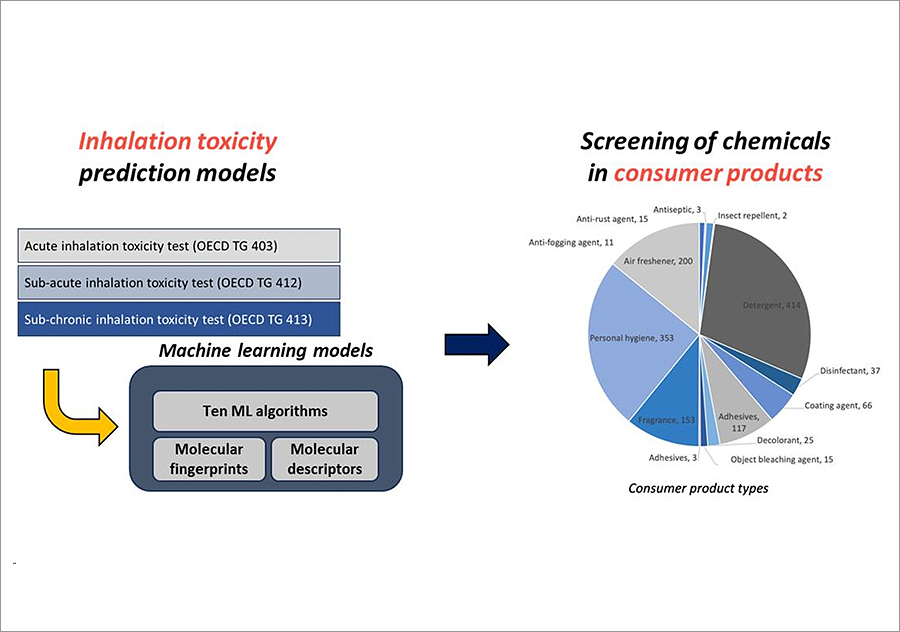Development of AI Model for Inhalation Toxicity Prediction of Household Chemical Products

- A joint research team led by Choi Jin-hee of the Department of Environmental Engineering in University of Seoul and Professor Jeon Jong-joon of the Department of Statistics
- Development of a model for predicting inhalation toxicity of AI-based chemicals to replace animal experiments
- Expectations for the risk management and safe design of daily chemical products
A research team led by Choi Jin-hee, a professor of environmental engineering at University of Seoul (President Won Yong-gul), said it has developed an artificial intelligence (AI)-based inhalation toxicity prediction model in cooperation with a research team led by Professor Jeon Jong-joon of the Department of Statistics and suggested the possibility of using it for risk management of substances in daily chemical products.
The study was co-authored by Kim Dong-hyun, a Ph.D. student in the Department of Environmental Engineering, and Cho So-young, a Ph.D. student in the Department of Statistics, and was published online on August 18 (Sun) in the Journal of Hazardous Materials (JHM), an international renowned academic journal in the field of environmental science under the title "Inhalation Toxicity Screening of Consumer Products Chemicals OECD Test Guideline Data-based Models.“

▲ Workflow of Development and Utilization of Inhalation Toxic Data-Based Machine Learning Model
Household chemical products can be exposed to the human body through various channels in daily life, of which exposure through inhalation accounts for the largest proportion. However, the current guidelines for inhalation toxicity testing established by the OECD rely heavily on animal testing. The tests require labor-intensive and skilled skills, and the chemicals that can be performed by animal testing are very limited. Therefore, the need for a new method to quickly and efficiently evaluate inhalation toxicity is emerging.
Accordingly, the research team developed a machine learning-based AI model that learns molecular fingerprints and molecular structures based on the inhalation toxicity test data collected in accordance with the OECD test guidelines. As this model can predict the inhalation toxicity of substances in daily chemical products, it is expected to contribute to the recently strengthened safety management of chemicals and be used as an alternative test method to minimize animal testing.

▲ Photograph by the researchers: From left, Professor Choi Jin-hee (Ministry of Environmental Engineering), Professor Jeon Jong-joon (Department of Statistics), Student Kim Dong-hyun (Department of Environmental Engineering), Student Cho So-young (Department of Statistics)
Professor Choi Jin-hee said, "The problem is that the risk assessment has not been sufficiently conducted amid growing public concerns about the safety of household chemical products. In order to solve this problem, it is necessary to develop a technology to predict the toxicity of household chemical products by applying advanced data science technology. This research is in its infancy, but it has great potential for use in the future as an important technology for civil safety.“
This study was conducted with the support of the Ministry of Environment's 'Environmental Disease Prevention and Management Core Technology Development Project' and the 'Life Chemical Product Safety Management Technology Development Project'.







